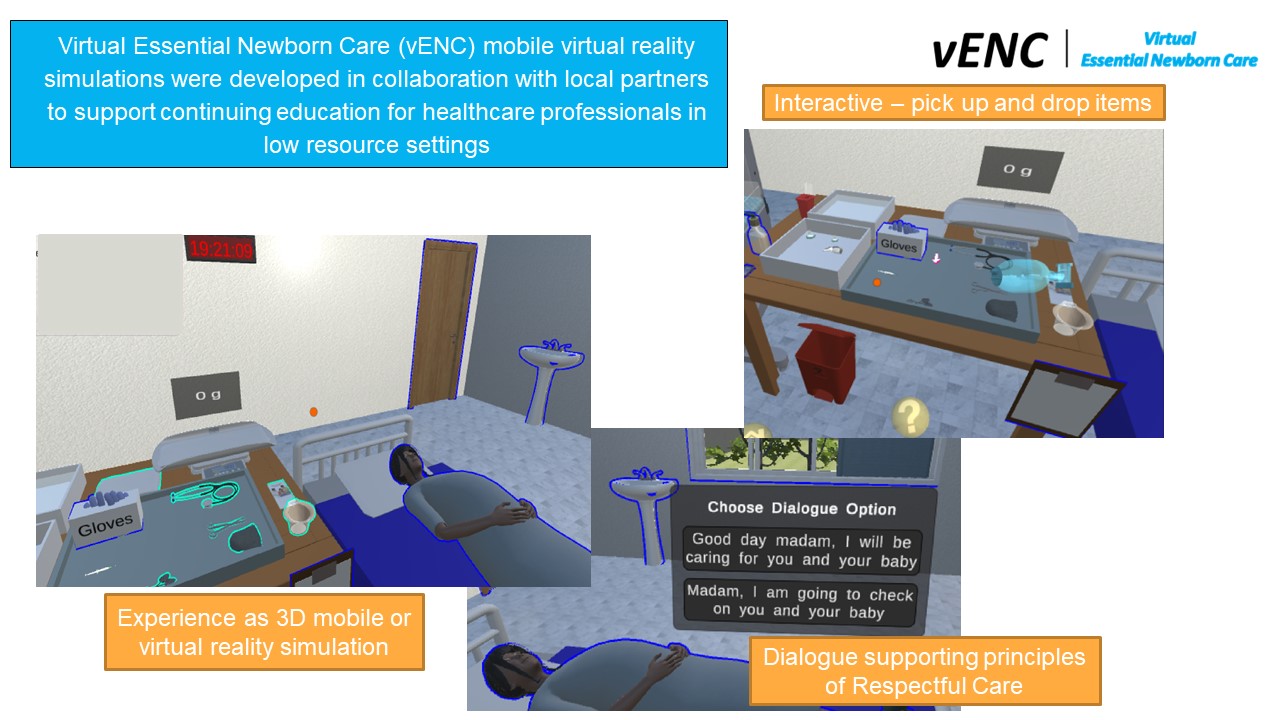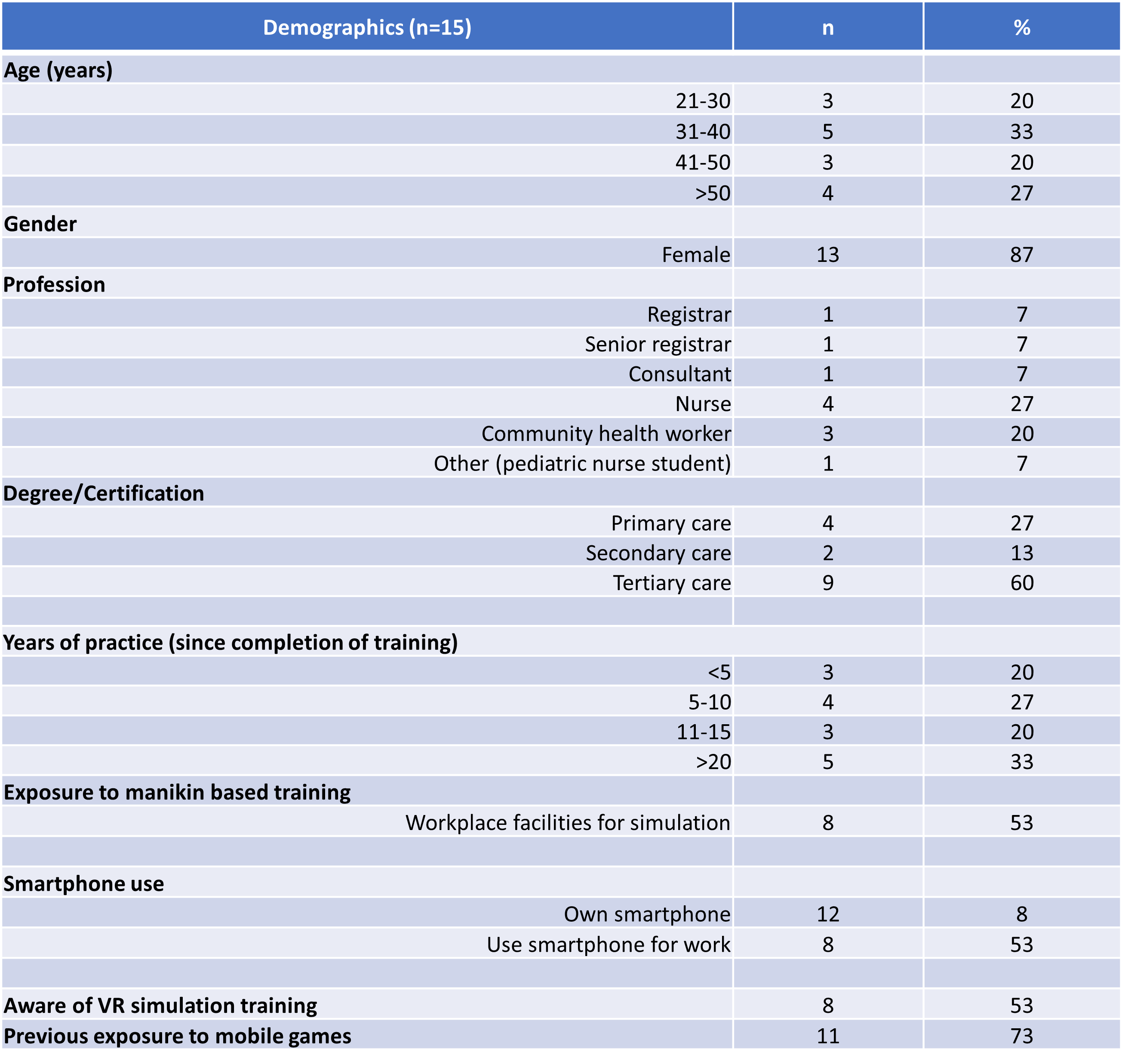Global Neonatal & Children's Health
Global Neonatal & Children's Health 1
628 - vENC: Virtual Essential Newborn Care Mobile Virtual Reality Simulation for Healthcare Professionals in Low Resource Settings
Publication Number: 628.315
.jpg)
Rachel Umoren, MBBCh, MS
Associate Professor of Pediatrics
University of Washington School of Medicine
Seattle, Washington, United States
Presenting Author(s)
Background:
Each year, there are 2.8 million newborn deaths, mainly from birth asphyxia and prematurity in low and low-middle income countries. The local development of mobile virtual reality (VR) simulations may support accessible, standardized continuing education for healthcare professionals in low resource settings.
Objective:
To co-develop and pilot test the usability of mobile VR simulations on early newborn care skills among healthcare professionals who provide newborn care in community and health facility-based settings.
Design/Methods:
The vENC project is a collaborative effort of two academic institutions in the U.S. and in Nigeria and a technical partner located in Nigeria for equitable and sustainable development of mobile VR simulations designed for healthcare professionals. An iterative approach was used to meet the acceptability and usability requirements of end-users. Design decisions included number and focus of scenarios, user interactions, game play elements, and feedback. Key metrics for the user interface and experience were collected through observations and surveys.
Results:
From October 2021-March 2022, design sessions were held to create 12 mobile VR simulations based on the newly released World Health Organization (WHO) Essential Newborn Care (ENC1 and ENC2) curricula. Figure 1. Monthly on-site usability tests were conducted from March-July 2022. Developers from eHealth4everyone and UW developers met twice a week via video conference for development discussions. Pilot testing was conducted using the vENC prototype by eHealth4everyone in the simulation facilities at the University of Lagos. A total of 28 usability sessions were conducted with 15 participants including physicians, nurses and community health workers. Table 1. Most p<span style="mso-bidi-font-style: italic;">articipants described the vENC application as appealing, clear, intuitive, high-quality, fun and easy to use, although some participants found it intimidating or confusing. End-user feedback on user interactions was used for iterative development leading to improved task completion rates from 59% to 81% task completion by first time users over the course of usability testing. All users would recommend the use of online simulation. Lessons learned included strategies for development, testing and deployment of mobile VR simulations in a low resource setting were utilized in the vENC pilot study. Table 2.
Conclusion(s):
Local capacity strengthening for development of mobile VR simulations is feasible through institutional partnerships. Lessons learned from the vENC project may inform the implementation of similar programs with the potential to improve health outcomes. 

.jpg)
